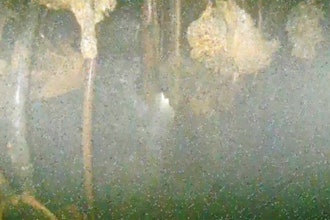LOS ANGELES (AP) -- The troubled San Onofre nuclear power plant on the California coast is closing after an epic 16-month battle over whether the twin reactors could be safely restarted with millions of people living nearby, officials announced Friday.
Operator Southern California Edison said in a statement it will retire the twin reactors because of uncertainty about the future of the plant, which faced a tangle of regulatory hurdles, investigations and mounting political opposition. With the reactors idle, the company has spent more than $500 million on repairs and replacement power.
San Onofre could power 1.4 million homes. California officials have said they would be able to make it through the summer without the plant but warned that wildfires or another disruption in distribution could cause power shortages.
It wasn't clear how electrical production from the plant would be replaced permanently. The California Public Utilities Commission said it will work with governments to ensure Southern California has enough electricity, which will require increased energy efficiency and conservation during peak usage, as well as upgrades to transmission and generation resources.
The plant between San Diego and Los Angeles hasn't produced electricity since January 2012, after a small radiation leak led to the discovery of unusual damage to hundreds of tubes that carry radioactive water.
The plant "has served this region for over 40 years," Ted Craver, chairman of SCE parent Edison International said in a statement. "But we have concluded that the continuing uncertainty about when or if (the plant) might return to service was not good for our customers, our investors or the need to plan for our region's long-term electricity needs."
SCE had been seeking permission from the Nuclear Regulatory Commission to restart the Unit 2 reactor and run it at reduced power, in hopes of stopping vibration that had damaged the tubing.
Edison's stock price was up slightly in midday trading.
The NRC said once Edison formally notifies the agency that it has permanently removed all fuel from the reactor cores, the NRC will move San Onofre to the agency's decommissioning oversight structure, the formal process for closing and dismantling a nuclear plant, the NRC said in an email to The Associated Press. Until that occurs, the NRC said it will continue its oversight of the plant to ensure it meets all requirements.
Friends of the Earth, an advocacy group critical of the nuclear power industry, praised the decision to close it.
"We have long said that these reactors are too dangerous to operate and now Edison has agreed. The people of California now have the opportunity to move away from the failed promise of dirty and dangerous nuclear power and replace it with the safe and clean energy provided by the sun and the wind," the group's president, Erich Pica, said in a statement.
Democratic U.S. Sen. Barbara Boxer of California, chairman of the Environment and Public Works Committee, said she's also relieved.
"This nuclear plant had a defective redesign and could no longer operate as intended. Modifications to the San Onofre nuclear plant were unsafe and posed a danger to the eight million people living within 50 miles of the plant," she said in a statement.
"Now that the San Onofre nuclear plant will be permanently shut down, it is essential that this nuclear plant be safely decommissioned and does not become a continuing liability for the community."
The problems center on steam generators that were installed during a $670 million overhaul in 2009 and 2010. After the plant was shut down, tests found some generator tubes were so badly eroded that they could fail and possibly release radiation, a stunning finding inside the nearly new equipment.
The four generators at San Onofre — two per reactor, each with 9,727 alloy tubes — function something like a car radiator, which controls heat in the vehicle's engine. The generator tubes circulate hot, radioactive water from the reactors, which then heats a bath of non-radioactive water surrounding them. That makes steam, which is used to turn turbines to make electricity.
Edison has argued for months that the Unit 2 plant could be safely restarted, but Craver recently raised the possibility of closing the plant because of lingering uncertainty about the future. The company had said little about the future of the heavily damaged Unit 3 reactor.
Questions arose over changes to the replacement generators — they were different than the originals, 23.6 tons heavier and hundreds of additional tubes were added as part of design changes.
San Onofre is owned by SCE, San Diego Gas & Electric and the city of Riverside. The Unit 1 reactor operated from 1968 to 1992, when it was shut down and dismantled.
Associated Press writer Matthew Daly in Washington contributed to this report.






















